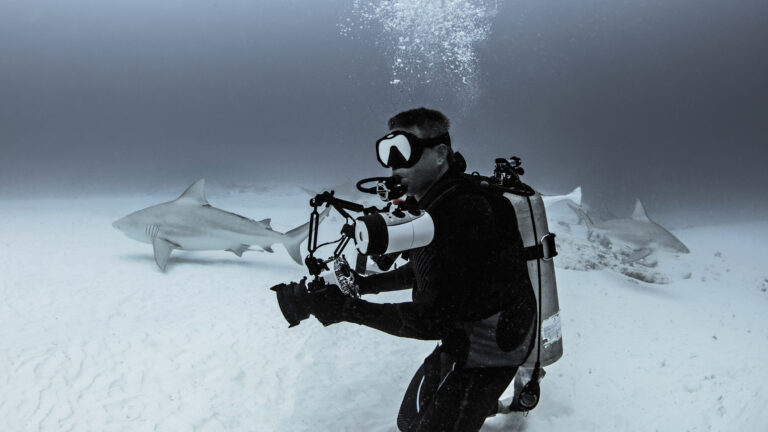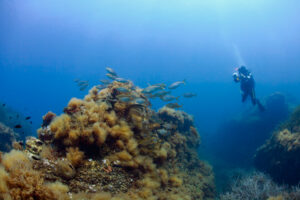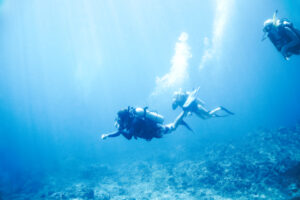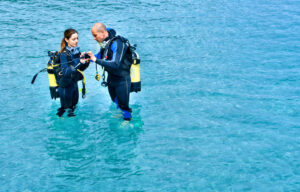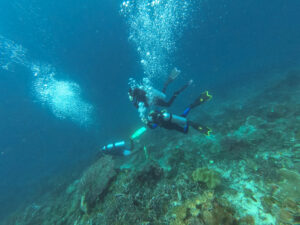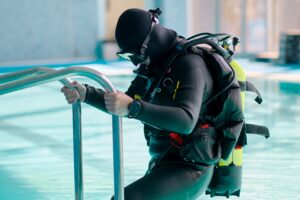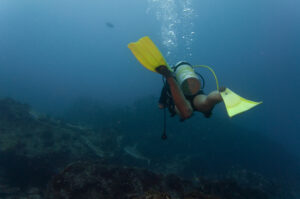What is Off-Gassing?
Off-gassing, within the context of scuba diving, refers to the process by which dissolved gases, primarily nitrogen, are expelled from a diver’s body during ascent. This phenomenon is crucial for diver safety, particularly in avoiding decompression sickness, commonly known as “the bends.” Understanding off-gassing is essential for divers to manage their ascents properly and ensure that the nitrogen absorbed under pressure is released gradually and safely.
Physiological Basis of Off-Gassing
Off-gassing is fundamentally linked to the solubility of gases in the body’s tissues and the changes in pressure that occur during a dive. When a diver descends, the increased pressure causes nitrogen from the breathing gas to dissolve into the blood and tissues more readily. The body’s tissues absorb nitrogen at a rate proportional to the surrounding pressure, a process governed by Henry’s Law, which states that the amount of gas dissolved in a liquid is proportional to the partial pressure of that gas above the liquid.
As a diver ascends, the ambient pressure decreases, and the nitrogen that has dissolved in the tissues begins to come out of solution. This is similar to the way carbon dioxide gas escapes from a carbonated beverage when the pressure is released. If the ascent is too rapid, nitrogen can form bubbles in the blood and tissues, leading to decompression sickness. Therefore, a controlled ascent is critical to allow the nitrogen to be expelled safely through the lungs.
The rate of off-gassing is influenced by several factors, including the type of tissues (fatty tissues absorb and release nitrogen more slowly than lean tissues), the depth and duration of the dive, and the diver’s overall health and fitness. Divers must be aware of these variables and adjust their dive plans accordingly to minimize the risk of decompression sickness.
The Decompression Theory
The study of decompression and the development of safe ascent protocols have a rich history rooted in both empirical observations and scientific research. Early divers and caisson workers experienced the painful and often debilitating effects of decompression sickness, which spurred the need for a deeper understanding of the phenomena involved.
Decompression theory revolves around the principles of gas absorption and elimination in the human body. One of the foundational concepts is the idea of saturation, where tissues absorb gases until they are fully saturated at a given pressure. When pressure is reduced, the tissues start to release the absorbed gases. The half-time, a critical aspect of decompression theory, refers to the time it takes for the amount of dissolved gas in a tissue to reduce by half. Different tissues have different half-times, ranging from minutes to several hours, necessitating a tailored approach to decompression stops.
Notable researchers like John Scott Haldane made significant contributions to decompression theory. Haldane developed the first systematic decompression tables, which allowed divers to ascend safely by making planned stops at various depths. These tables were based on the concept of staged decompression, where divers spend specific periods at certain depths to allow for the controlled release of nitrogen from their tissues. Modern decompression models have evolved from these early tables, incorporating advances in our understanding of physiology and gas kinetics.
Methods to Control Off-Gassing
To mitigate the risks associated with off-gassing, divers use several methods designed to control the rate at which nitrogen is expelled from their bodies. One of the most critical practices is the use of decompression stops, which are planned pauses at specific depths during ascent. These stops provide time for nitrogen to be safely released from tissues and expelled through respiration.
Decompression tables and dive computers play an essential role in planning and executing these stops. Decompression tables provide guidelines based on depth and bottom time, indicating the necessary stops and durations to ensure a safe ascent. Dive computers offer a more dynamic solution, continuously calculating the diver’s depth, time, and ascent rate to provide real-time guidance on decompression requirements. These devices have become indispensable tools for divers, enhancing safety by adapting to the specific conditions of each dive.
Another critical factor in controlling off-gassing is the ascent rate. Divers are trained to ascend slowly, typically no faster than 9 meters (30 feet) per minute. This slow ascent rate helps to minimize the formation of nitrogen bubbles in the tissues and blood. Adhering to a controlled ascent rate, combined with decompression stops, is crucial for preventing decompression sickness.
Impact of Different Gases on Off-Gassing
The type of gas used in breathing mixtures significantly impacts the off-gassing process. While nitrogen is the primary inert gas in standard air, other gases like helium are used in specific types of diving to reduce the risks associated with nitrogen absorption. Helium, being less soluble in body tissues than nitrogen, allows for faster off-gassing and reduces the likelihood of nitrogen narcosis, a condition that can impair a diver’s cognitive function at depth.
In technical diving, trimix (a mixture of oxygen, nitrogen, and helium) is often used to manage the effects of deep diving. The inclusion of helium helps to minimize nitrogen absorption and accelerates off-gassing during ascent. This makes trimix an invaluable tool for deep and extended dives, where managing decompression stress is critical.
However, the use of different gases also introduces unique challenges. Helium’s low density can lead to issues with thermal conductivity, potentially causing hypothermia in cold water. Additionally, while helium reduces nitrogen-related problems, it can contribute to high-pressure nervous syndrome (HPNS) at great depths. These factors must be carefully considered when planning dives that involve alternative breathing mixtures.
Health Implications of Inadequate Off-Gassing
Failing to manage off-gassing properly can lead to serious health consequences, most notably decompression sickness (DCS). DCS occurs when nitrogen bubbles form in the bloodstream and tissues, leading to a range of symptoms from joint pain and dizziness to paralysis and death. The severity of DCS depends on the amount of nitrogen released and the speed of the ascent.
Short-term effects of inadequate off-gassing can include joint and muscle pain, often referred to as “the bends,” along with neurological symptoms like dizziness, confusion, and visual disturbances. In severe cases, nitrogen bubbles can cause blockages in blood vessels, leading to life-threatening conditions such as arterial gas embolism.
Long-term effects of repeated exposure to poor off-gassing practices can result in chronic health issues. Divers may experience joint damage, osteonecrosis, and other musculoskeletal problems. Neurological damage can also occur, leading to cognitive and motor impairments. Preventative measures, including proper training, adherence to decompression protocols, and regular medical check-ups, are essential to minimize these risks.
Technological Advances in Monitoring and Managing Off-Gassing
Recent technological advancements have significantly improved the ability to monitor and manage off-gassing. Modern dive computers are equipped with sophisticated algorithms that provide real-time data on decompression status, helping divers to adjust their ascents accordingly. These devices can track multiple dives, account for variations in breathing gas mixtures, and offer personalized decompression schedules.
Innovations in dive gear, such as rebreathers, have also enhanced safety by allowing divers to recycle breathing gas and extend dive times without increasing nitrogen absorption. Rebreathers can reduce the volume of inert gas breathed, thereby lowering the amount of nitrogen absorbed and facilitating more controlled off-gassing.
Additionally, advancements in materials and design have improved the reliability and functionality of diving equipment, contributing to safer and more efficient off-gassing. These technological improvements have made diving safer and have expanded the possibilities for exploring underwater environments.
Key Takeaways
Off-gassing is a critical process in scuba diving, essential for preventing decompression sickness and ensuring diver safety. Understanding the physiological basis, implementing proper decompression practices, and utilizing advanced technology are key components in managing off-gassing effectively. By adhering to these principles, divers can minimize risks and enjoy safer diving experiences.

